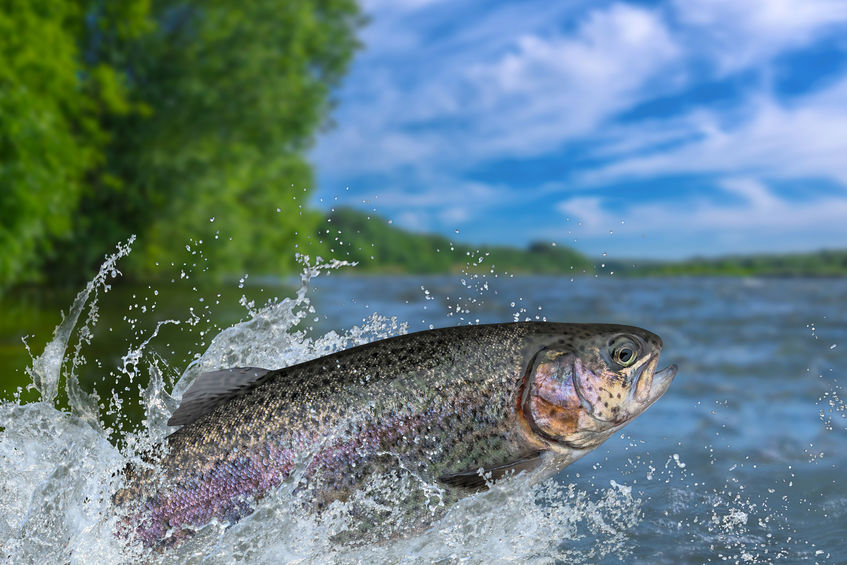
If you’re not one of those ambitious, dedicated anglers who takes to the water in the frigid winter temperatures, then now is probably about the time you’re gearing up for your first fishing trip of the season. Early spring can be a great time to fish for a variety of different species, such as bass, trout, walleye, northern pike, and more.
Fishing at this time of year can be unpredictable with rain, mud, thawing ice, and runoff posing challenges. But with a few handy tips, you’re more likely to have a successful spring fishing expedition and start off your season on the right foot!
Check the weather.
Spring temperatures and weather conditions can be erratic. Just think about how many times you’ve stepped outside on a sunny spring morning only to be surprised by freezing rain in the same afternoon. That’s why it’s especially important to pay attention to the forecast in advance when fishing this time of year, so you can plan, prepare, and dress accordingly.
For example, in warmer weather fish tend to move to shallow waters, and vice versa in the cold. Also, be sure to have a change of clothes and extra layers in case conditions are colder or wetter than you expect.
Fish in the afternoon.
Early spring fishing usually has the best yield when done in the afternoon. Normally, mornings are the best time to reel in a good haul, but at this time of year the water needs more time to warm up. Even the slightest uptick in temperature can take the water from slow and unmoving to a plentiful afternoon feeding frenzy.
Use live bait.
After a long winter, fish are going to be eager for a good, juicy meal. Live bait will be a bigger draw for them, whereas they might think twice about an artificial lure. Keep in mind though that fish are also more sluggish in early spring from a mostly dormant winter. This can make them more apprehensive to go after something big that could be a predator, so it’s best to stick with smaller bait on your first handful of excursions.
Look for warm, clear waters.
Vegetation and bait fish are more abundant in warm waters, which in turn attracts many bigger fish to these spots. Fish also concentrate in clearer waters, where they have better visibility for foraging. For example, if the banks are flooded, the water that covers the normal bank will be clearer, and fish will congregate there.
Especially in spring, when rain can make the waters muddier than normal, you should seek out these warm, clear waters for the best chance at success. It will be easier for you to see and catch them in these areas anyway.
Take things slow.
Again, fish are slower in the early spring after they’ve been mostly dormant for a long winter. If you want to catch them now, you’ll have to match their speed. Start with moving your bait around more slowly than usual, so they’re still willing to go after it. When you feel a bite, wait an extra second to set the hook and then just pull up and tighten the line and start to reel it in.
Be patient.
When you fish this early in the season, you can expect to hit a lot of long, slow stretches out on the water. Once the fish start biting though, it will be a frenzy. Be patient and try not to get discouraged when you hit a rut. You can even use these slow periods to your advantage to experiment with new equipment, tackle, and casting techniques. Overall, if you stick with it, you will be rewarded.
If you’re interested in an early spring fishing trip that combines the thrills of the great outdoors with the comforts of modern accommodations, book a trip to Lawrence Bay Lodge! Located on Reindeer Lake, we’re among Canada’s top locations for fishing vacations.
Call us at 701-262-4560 to book your lodge room or outpost cabin today!

